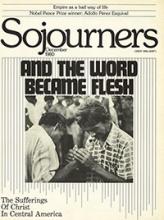This article is excerpted from an interview and article which appeared in the July, 1980 IFOR Report.
There are certain things that must be kept in mind in order to understand how in Nicaragua a dictatorship was overthrown. It was not uniquely thanks to the guerrilla struggle.
The Somoza dictatorship was one of the longest lasting in Latin America. Over a long period of time, small groups of Sandinista guerrillas had succeeded only in chipping away at the government, but they never moved it, and they never defeated it. Then certain elements appeared in the Nicaraguan situation which became the essential points that provoked the fall of Somoza's government.
The first point was the death of the journalist Chamoro, which provoked a popular reaction in all sectors. There were strikes and general work stoppages. It was an intuitive nonviolent struggle of the people, and it provoked international solidarity.
The second critical point was the death, widely seen on television, of the North American journalist. This provoked an international isolation of the Somoza government.
A third fundamental point was that Somoza traveled to the United States at about that time to ask for guarantees of military and economic support from Carter's government, and when he returned to Nicaragua, he complained that his best friend had abandoned him. In Nicaragua, popular resistance followed, with work stoppages, hunger strikes and a general mobilization. The Sandinistas used this situation to go on securing positions....
Read the Full Article

